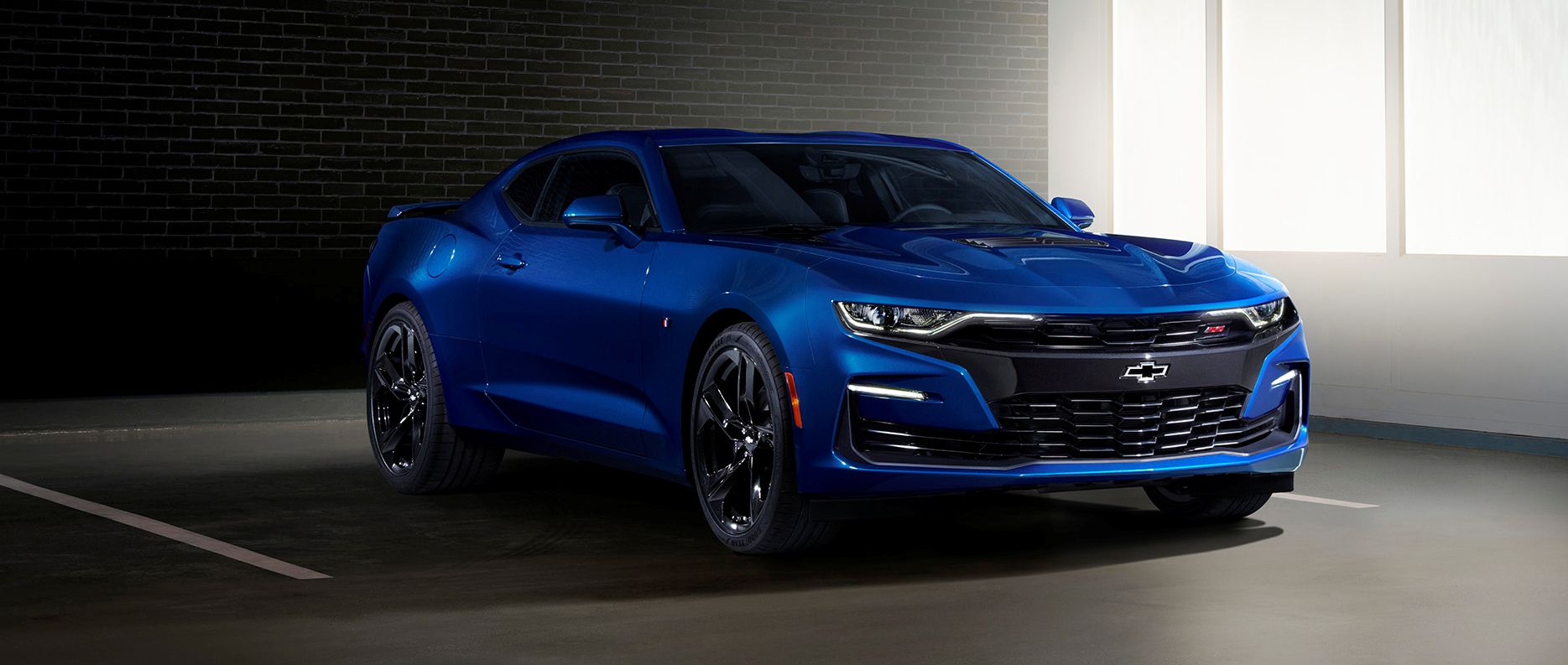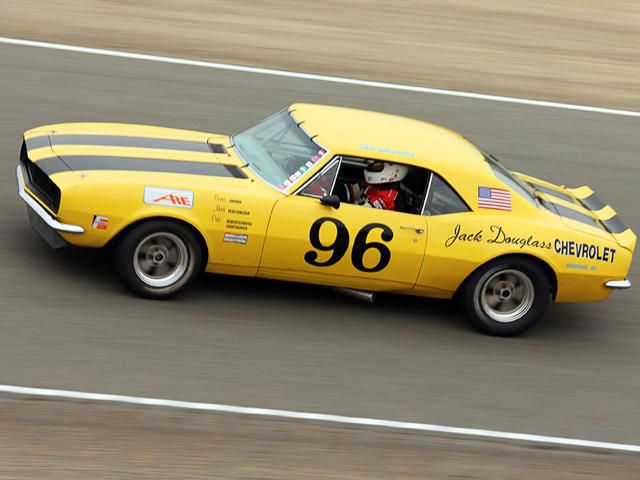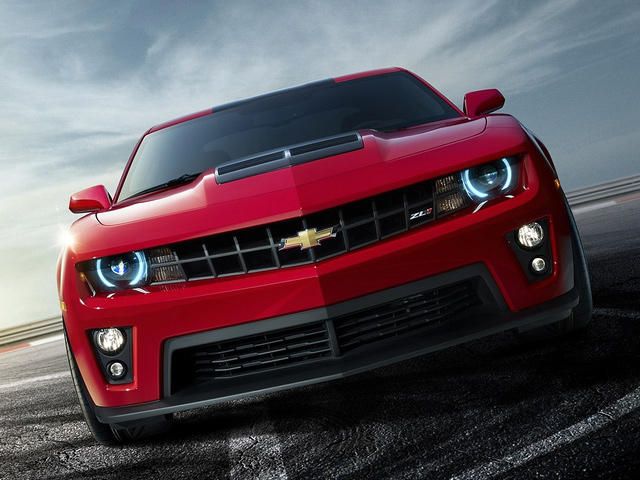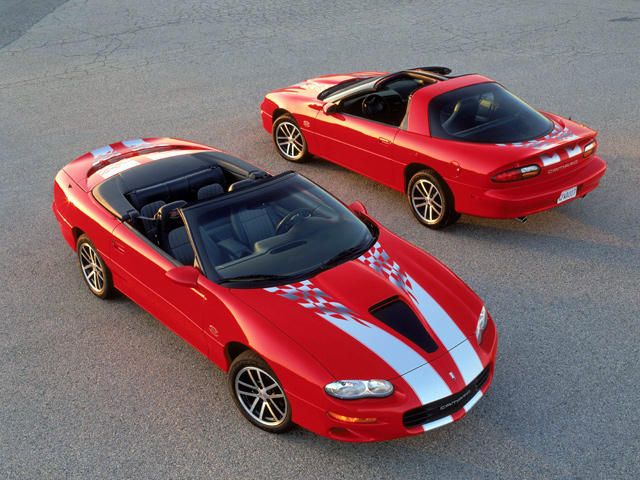
When, in 1966, a press conference was held for the official unveiling of the 1967 model-year Camaro, GM's executives were faced with the question of what the name means. Their answer, that the Camaro was "a small, vicious animal that eats Mustangs", tells you everything that you need to know about the Camaro. 1967 was also the first year of another GM pony car, the Pontiac Firebird, but it was the Camaro that took the role the lifelong enemy of the Ford Mustang.
Apart from a recent eight-year gap in production, this rivalry has continued through every generation of each car, and it is as fiercely contested now as it has ever been, if not more. Unlike some other pony cars, Chevy had a winning formula for the Camaro right from the start. The body style was an instant classic, and the wide range of available engines and trim options were exactly the sort of thing that a pony car needs to be successful. That said, the Camaro was not the instant runaway success that the Mustang was. This could be partly attributed to the fact that the Mustang was essentially unrivaled in its niche for the first few years it was sold.
Even once the competition heated up, there haven't been many years when the Camaro outsold the Mustang, including an uninterrupted 24-year streak of Mustang sales supremacy, ending just last year. Like other pony cars, the first Camaros borrowed heavily from the corporate parts bin, with its platform being based on the one used for the Nova. As is the norm for pony cars, the Camaro came with a six-cylinder engine as the base, and a choice of five different V8 engine options. The smallest of these was a 302 cu power plant which was found in the Z/28 performance models.
These models were intended to be essentially track-ready, and were built for homologation purposes so that Chevy could race in the Trans Am Series. Though relatively small, the 302 V8 was immensely powerful for the time. The official power rating was listed at 290 horsepower, both for insurance purposes and to qualify for Trans Am regulations. In truth, the version of the 302 with a single four-barrel carburetor produced about 360hp, and the dual four-barrel setup used on the Trans Am cars produced about 400hp. Also of note in the first generation were the COPO Camaros.
Simply put, the Camaro team was forbidden by GM to put any engine bigger than 400 cu in the Camaro. So, using a special ordering system intended for fleet vehicles, dealers (the most famous of which was Yenko) would obtain bigger 427 cu V8 engines and install them in Camaros themselves. The engines were hugely expensive, but dealers still found homes for more than a thousand of these special Camaros. The second-generation Camaro came out in 1970, and by this time, the competition in the pony car niche had reached its highest-ever level. This generation started off strong, but became heavier and less powerful after just a few short years.
The golden era of the pony car effectively ended in 1974, with Chrysler throwing in the towel, and the Mustang making the transition to the Mustang II. So, although 1975 saw a 350 V8-powered Camaro producing a pathetic 145 horsepower, the bar was set so low by what little remaining competition there was, the Camaro and Firebird still managed to sell in huge numbers. A new, and much-improved, Mustang hit dealerships in 1979 and devastated Camaro sales figures. By 1981, Camaro sales had dropped to less than half of what they had been in 1979, and the need for a complete redesign was obvious.
Introduced in 1982, the third-generation of the Camaro was a big improvement over what had become of the second generation. Power output improved greatly over the course of the third-gen's ten year production run, and the IROC-Z Camaro even made Car and Driver's Ten Best list in 1985. Camaros outsold Mustangs that year, but it would be the last time for many, many years. The fourth generation of the Camaro came out in 1993 and would last until 2002, when GM killed it off, due to a record low in sales. Though the Mustang would manage to hang on through this period, the Camaro had become largely irrelevant.
Young people were turning increasingly to imported cars, where an emphasis on efficiency had prevented performance cars from becoming bloated and underpowered. GM's stubborn refusal to evolve the Camaro by anything more than baby steps meant that the once cutting-edge car had become something of a joke. The decision to kill it off was inevitable. But GM made up for all of this in 2009, when the nameplate was resurrected for a fifth generation, one which done right, and was once again a real competitor for the Mustang.
Just as they had done in 1967, Chevy brought out their pony a few years after Ford, but got it exactly right from the start. The styling calls on the original '67 car for inspiration, and several variations have been made to compete with all of the different forms of Mustang available. It remains to be seen how long these new pony cars will stick around, but now is certainly a new golden era for both the Camaro and pony cars in general.



